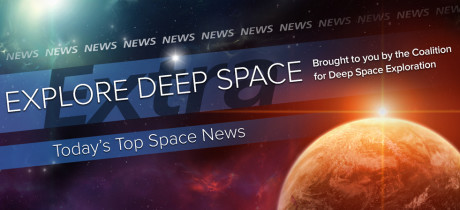In Today’s Deep Space Extra… A possible U.S. government shutdown affecting a number of civilian agencies, including NASA and NOAA, on Friday at midnight looms. Legislation extending NASA oversight of the International Space Station (ISS) until 2030 cleared the U.S. Senate on Thursday.
Human Space Exploration
Senate passes commercial space bill
SpaceNews.com (12/20): Legislation passed by the U.S. Senate on Thursday, the Space Frontier Act, authorizes an extension of International Space Station (ISS) operations from 2024 to 2030 and opens military installations to commercial launch activities. The Act had bipartisan sponsorship. However, with the current legislative session coming to a close soon, it may be too late in the year for the bill to become law. The White House has proposed that NASA’s human low Earth orbit activities transition to the private sector by 2025.
Apollo 8: NASA’s first Moonshot was a bold and terrifying improvisation
Washington Post (12/20): Launched 50 years ago, NASA’s Apollo 8 mission represented a bold move by the U.S. to explore the Moon with astronauts. NASA’s trio of Apollo 8 astronauts launched from Earth to circle the Moon over Christmas Eve and Christmas in 1968, laying the ground work for Apollo 11, the first human lunar landing that would soon follow in July 1969.
Space Science
NASA’s InSight lander carefully sets down its seismometer on the Martian surface
Geekwire.com (12/20): After a successful late November landing on Mars, NASA’s Mars InSight lander spacecraft lander has lowered is primary study instrument for first ever studies of the Marian interior onto the surface of the Red Planet.
National Academy of Sciences (12/20/18): A National Academy of Sciences report released Thursday urges NASA to invest more in the care and preservation as well as the instrumentation needed to analyze extraterrestrial samples returned to Earth from future planetary science missions. Some of the destinations include the Moon, Mars, comets and the icy moons of Jupiter and Saturn.
Universe Today (12/20): More than a decade ago, U.S. and European spacecraft in orbit around Mars detected traces of methane, a gas that can be linked to biological activity, or geophysical sources. More recently, hints of methane at Mars are not so obvious.
Other News
Possible government shutdown back on the brink
Spacepolicyonline.com (12/21): The possibility of a U.S. government shutdown on Friday at midnight increased on Thursday as lawmakers and the White House struggled to agree on the President’s request for $5 billion in funding for the construction of a southern border wall. A shutdown would affect a number of civilian federal agencies, including NASA and NOAA. The budget continuing resolution that was in play would extend business as usual until February 8 and after the swearing in of lawmakers elected during the November mid-term. The measure made it through the Senate, but not the House. Congress failed to pass a budget for the 2019 fiscal year that began October 1.
Op-ed | CLPS will jump-start the lunar economy
Coalition Members in the News – Astrobotic, Lockheed Martin, Deep Space Systems
SpaceNews.com (12/20): NASA’s Commercial Lunar Payload Services (CLPS) solicitation, which on November 29 cleared a mix of nine old and new U.S. launch services companies to transport NASA payloads to the lunar surface sets the stage for a cost effective, wide reaching strategy to hasten a sustained U.S. return to the lunar environment, according to an op-ed written by a Denver consultant and former aerospace company executive.
Chinese hackers charged with stealing data from NASA, IBM, and others
The Verge (12/20): The Department of Justice (DOJ) has acknowledged a broad investigation into hacking activities at NASA and traced to Chinese sources, with a focus on the Goddard Space Flight Center and the Jet Propulsion Laboratory (JPL).

